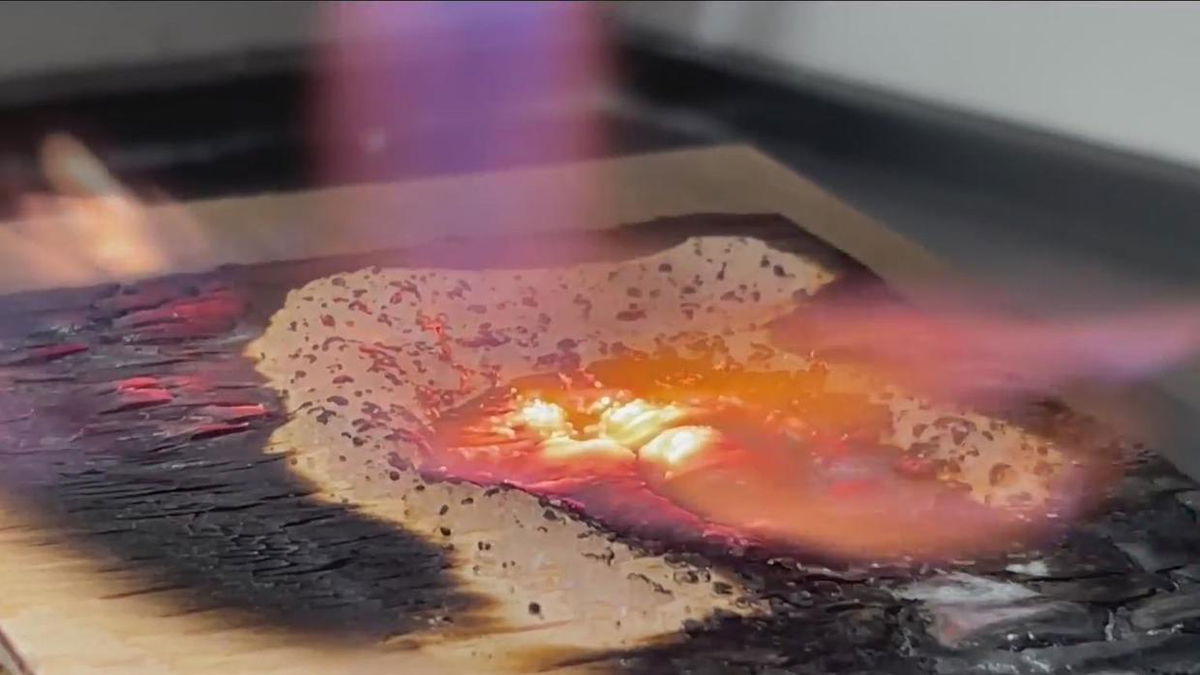Stanford scientists develop gel to protect homes against wildfires

By Mary Lee
Click here for updates on this story
STANFORD, California (KPIX) — Stanford University researchers have developed a new solution to fight wildfires and protect homes. They said their new sprayable gel technology can protect homes against wildfires, transforming into a solid air bubble shield of protection.
Changxin “Lyla” Dong is a third-year PhD candidate at Stanford. She has always been passionate about science ever since she was a child. It’s that passion that brought her to Stanford.
Dong remembered her breakthrough first year when her lab made an incredible discovery. She called it, “serendipity.”
“It’s never been reported in any study or paper, and we also discovered it by accident!” said Dong.
“Science doesn’t have nearly as many eureka kind of moments as movies would have you believe, but this was definitely one of those eureka moments,” said Eric Appel, Stanford Associate Professor of Materials Science and Engineering. “It was really fun one to see the material change right before your eyes, and then provide such a massive improvement in protection to the treated substrates.”
Their surprise discovery was that when they spread their hydrogel technology onto a piece of wood and then blasted it with fire, their gel actually transformed, bubbling up into this aerogel shell-like layer, completely protecting the wood.
“We were able to show that if you take a torch and you put it right on the gel, that the gel poofs up into a silica-like foam and so that was surprising,” said Appel. “We really had no idea what to expect.”
Dong demonstrated and showed how the gel protected the wood.
She explained, “When you see the inside, it’s like a big air pocket. It’s like a solid air bubble. When you carefully remove it, you can see the wood is intact.”
“I was thinking that this was very new!” said Dong. “I’ve personally seen anything like that!”
Existing sprayable gels on the market today can only protect homes against wildfires for 30 seconds at best. The problem is those hydrogels only work when they’re wet.
Stanford’s new gel technology works by creating a solid foam insulation that can withstand fire for five minutes.
Researchers said they still need to fully develop the product, conducting pilot burn tests on a larger scale before getting it on the market to homeowners.
“As an engineer, the kind of thing I love focusing on are where there are problems without solutions and how can we design better technologies to address those challenges,” said Appel.
“I think it’s very rewarding for me to know that I’m already making an impact as a PhD student” said Dong.
Stanford researchers said their gel technology is environmentally safe. Their research was recently published in the scientific journal Advanced Materials.
Please note: This content carries a strict local market embargo. If you share the same market as the contributor of this article, you may not use it on any platform.
